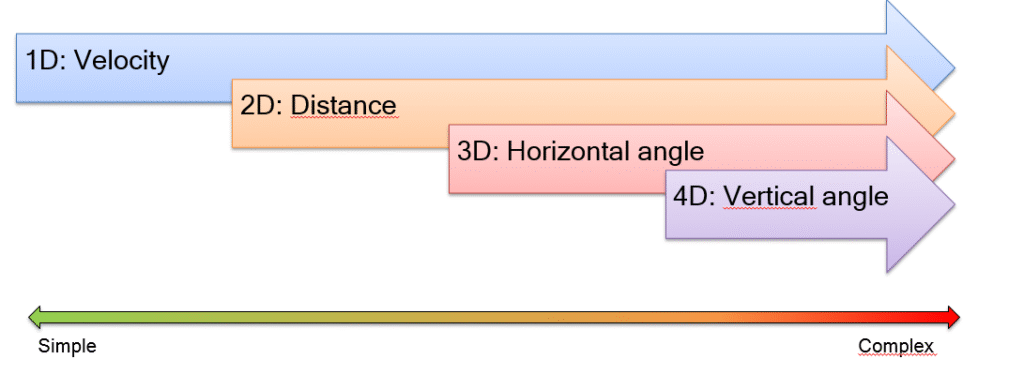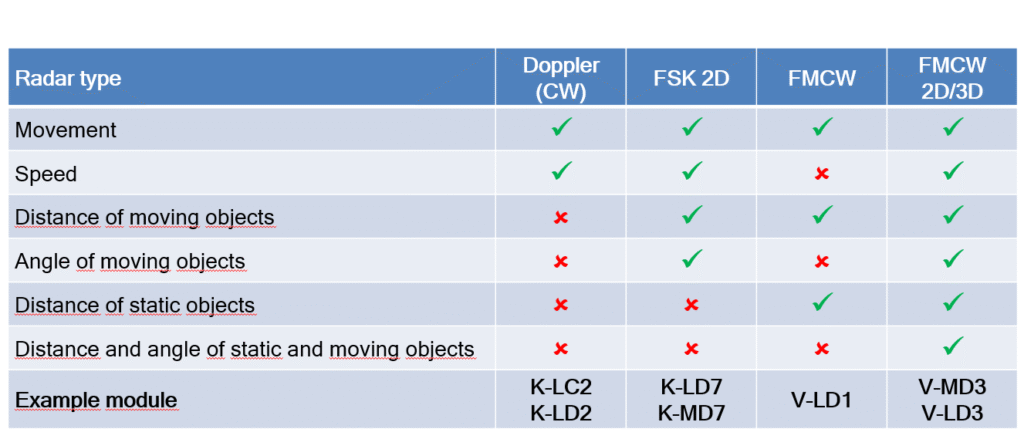Every two years, RFbeam Microwave invites its distributors to Switzerland to dive together into the latest developments in radar technology. In September 2025, it was time again: Hotel Heiden became the meeting point for our distributors from all over the world. The event not only offered space for professional exchange, training and product presentations, but also for personal encounters, networking and creating new connections.
Our aim was to show the diversity of radar applications. And that’s exactly what it was about: exploring together where and how our products can be used – from classical industrial applications to traffic solutions and future-oriented topics such as drones and robotics.
Radar - Possibilities and Limitations
The event started with an introduction to the technical fundamentals of radar technology. The presentation covered comparisons with other sensor technologies such as PIR, ultrasonic or LiDAR, as well as the unique strengths of radar: long detection ranges, robustness against weather conditions and flexible design options.
The measurement capabilities of radar systems are diverse and strongly dependent on system design and complexity. Radars can measure up to four dimensions:
- 1D: Velocity
- 2D: Distance
- 3D: Horizontal angle
- 4D: Vertical angle

Measurement Parameters and System Complexity
The ability to measure specific parameters depends on the sensor complexity and the technology used:
- Speed and direction: Possible with simple, low-cost sensors, typically measured using the Doppler effect.
- Distance of objects: Requires more complex systems, typically achieved through modulation schemes.
- Angle of objects: Needs multiple antennas in the measurement direction, increasing complexity.
Modulation Types and Measurement Performance
Radar systems use various modulation techniques:
- Continuous Wave (CW)
- Frequency Shift Keying (FSK)
- Frequency Modulated Continuous Wave (FMCW) – with sawtooth or triangle ramps
- Fast Multi-Chirp FMCW – for advanced Range-Doppler processing
- Pulsed coherent (PC)
Pulsed coherent radars are usually not used by RFbeam due to their shorter detection distances and higher peak power requirements. RFbeam focuses on CW, FSK and FMCW, proven and regulation-compliant techniques.
Radar Resolution
Resolution refers to the ability of radar to separate multiple objects in one dimension. It depends on modulation type as well as the number of TX/RX channels.
- Angular separation (spatial resolution): Achieved with more RX/TX channels. Modern imaging radars can operate with up to 16x TX and 16x RX channels. MIMO helps to reduce the number of physical channels needed.
- Velocity resolution: Example – two cars driving at the same speed but at different distances cannot be distinguished by speed alone.
- Distance resolution: Depends exclusively on usable bandwidth – e.g., 100 MHz bandwidth at 24 GHz gives 1.5 m resolution, while 7 GHz at 61 GHz achieves ~2.1 cm resolution.
Even the limitations were openly discussed: challenges such as distinguishing objects with the same velocity or the influence of frequency band and antenna design on range. The conclusion was clear: Radar remains a very versatile sensor technology where multiple applications can benefit from.
Applications in Distance and Level Measurement
Another focus was on industrial solutions, where radar sensors provide significant advantages, especially under challenging conditions.
- Tank level measurement: Reliable monitoring of liquids and solids, even under pressure or steam.
- Water level monitoring: From rivers and lakes to wastewater systems – radar ensures reliable measurements for flood protection and efficient sewer management.
- Velocity measurements: Whether water flow, conveyor belt speed or intrinsic vehicle speed, radar delivers accurate values independent of wheel slip or vibration.
- Anti-collision and altimetry: Ensuring safety in robotics, logistics and drone applications.
This session highlighted how radar is already firmly embedded in critical infrastructure and production processes, with much more potential ahead.
Motion Detection - From Doors to Healthcare
Radar’s breadth of applications was demonstrated impressively in the motion detection segment:
- Automatic doors: Modern systems use radar not only to detect motion but also to evaluate speed and direction – saving energy and improving comfort.
- Classification of objects: Distinguishing between people, vehicles and animals is key for access control and security.
- Micro-movements: Detecting motions caused by breathing or heartbeat enables presence systems in offices or child safety solutions in vehicles.
- Healthcare and elderly care: Radar can detect falls and trigger rapid assistance, directly improving lives.
- Special applications: From measuring golf ball speeds exceeding 300 km/h to monitoring mountain movements across kilometers.
Radar as the “invisible observer” stands out for its privacy compliance: unlike cameras, it delivers valuable data without capturing images or personal details.

Traffic Applications - Intelligent Mobility
Radar has long been established in traffic applications, well known for speed measurement. Today, its scope is far broader:
- Classification of road users: From trucks to bicycles and even pedestrians.
- Traffic flow analysis: Measuring density from lamp posts or bridges to optimize lighting and infrastructure.
- Sensor activation: Low-power systems that activate only when vehicles are present.
- Cyclist and pedestrian counters: Supporting urban planning with accurate data.
- Safety systems: Detecting waiting pedestrians or profiling trucks and cars.
Radar provides a unique foundation for Smart Cities and sustainable mobility: precise, robust and energy-efficient.
Drones - The Future in the Air
Drones are no longer a niche market. Agriculture, logistics, public safety and disaster relief are among the fastest-growing sectors – and radar plays a central role:
- Collision avoidance: Compact radar modules help drones detect obstacles even in fog, rain or darkness.
- Altitude and landing support: Precision measurements enable safe landings on moving or uneven platforms.
- Search and rescue: By detecting micro-movements like heartbeat or breathing, radar can locate people under debris or snow.
- Counter-drone systems: Ensuring security by detecting and tracking unauthorized drones early.
More than Technology - The Event as a Platform
Beyond the technical content, the distributor event was also an invaluable opportunity for personal exchange. Guided tours through the RFbeam headquarters gave participants insights into ongoing projects and development work. Q&A sessions provided space to address specific concerns.
Conclusion - Shaping the Future Together
The distributor event 2025 clearly demonstrated how versatile radar technology already is – and how much untapped potential lies ahead. From industry and traffic to aerospace: RFbeam delivers the sensors that enable our partners to build real-world solutions.
We sincerely thank all participants for their valuable input, questions and shared commitment. Regular exchange with our distributors is the foundation for providing the best possible support to our customers worldwide.
We are already looking forward to the next meeting – and to many exciting projects that will take shape in the meantime!